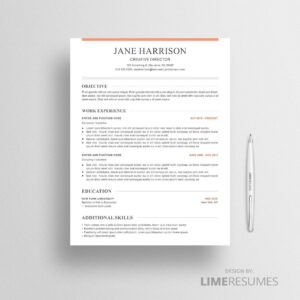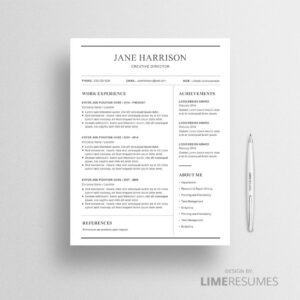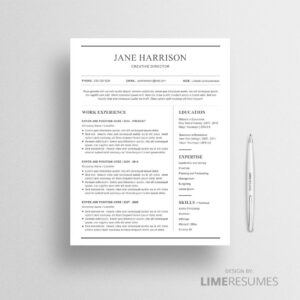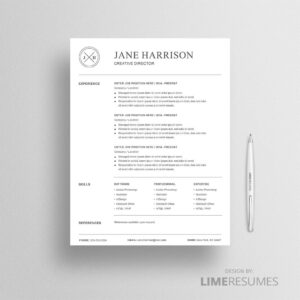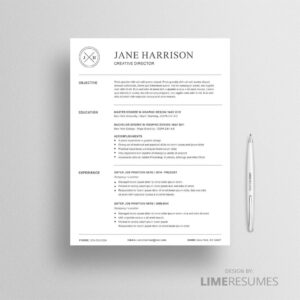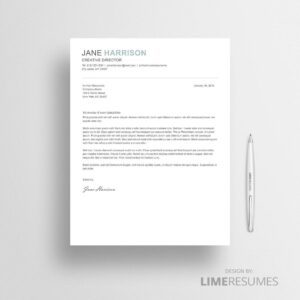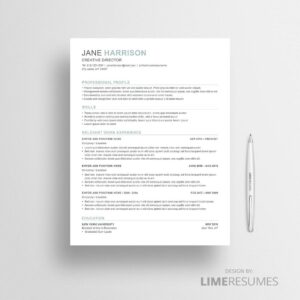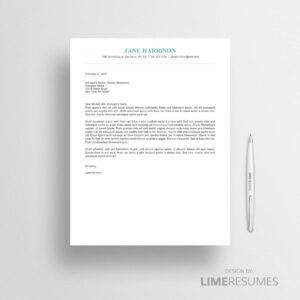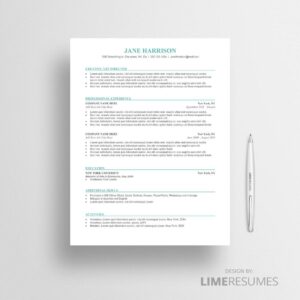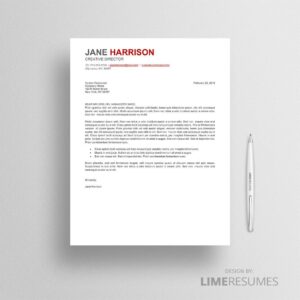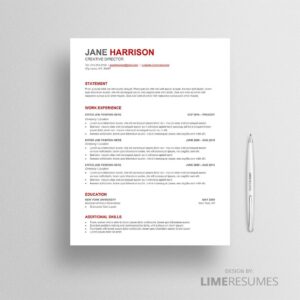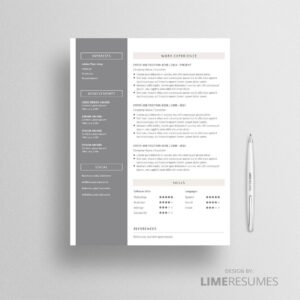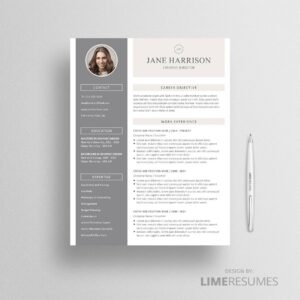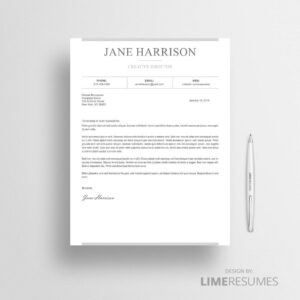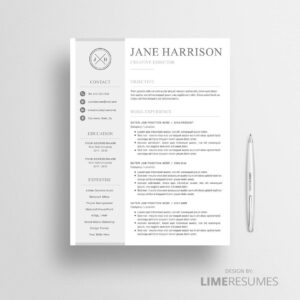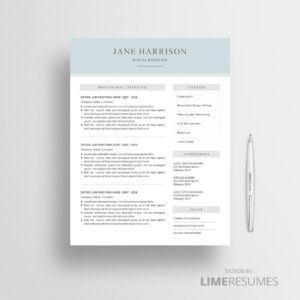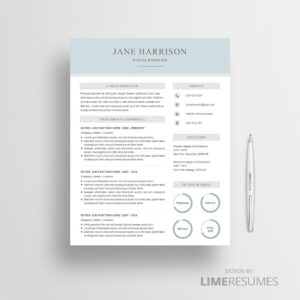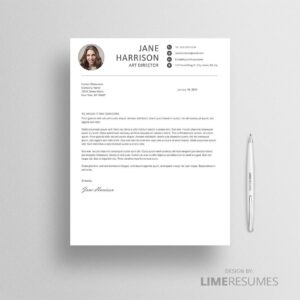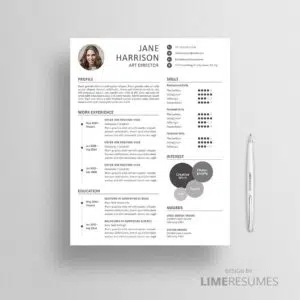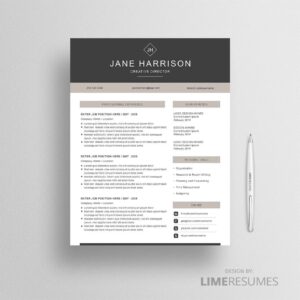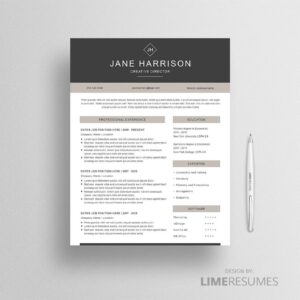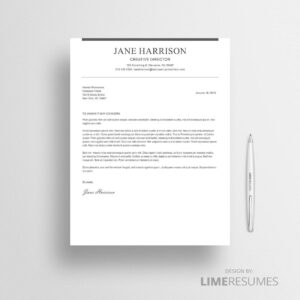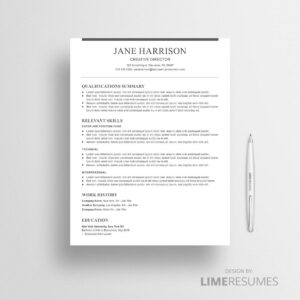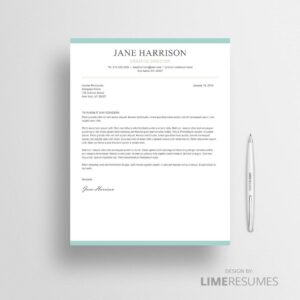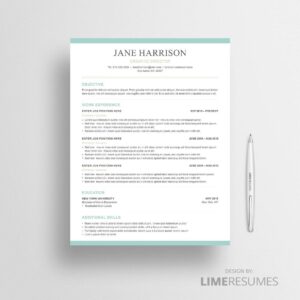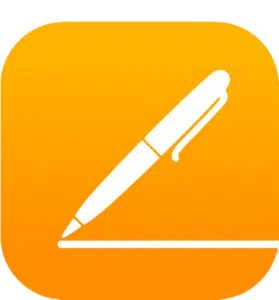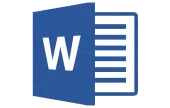Best Resume Examples For Job Seekers In Any Industry
Resume Examples
Subscribe to our Newsletter
Resume examples and tips on this page are a great source when the time comes to make your resume or just to see examples of professional resumes.
Job seekers from across all industries can benefit from these resources.
Take a look at our resume examples and find out why they’re so great.
The resume examples we offer here can offer you the inspiration needed to build your own impressive resume and wow hiring managers to get the job.
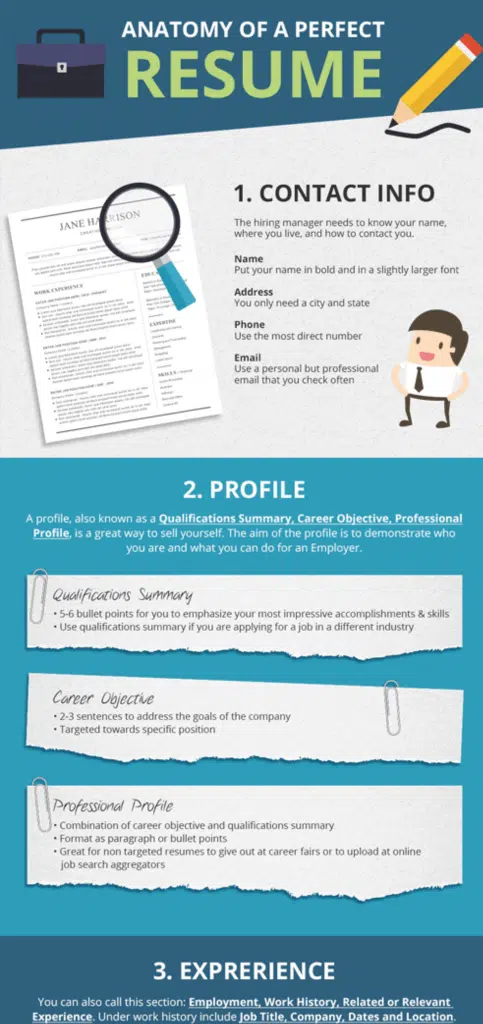
Anatomy of a Resume
Here is a conventional resume example on how to put together a resume for any industry.
Header
The header of a resume needs to contain the information a recruiter would need to know in order to contact you.
It should be just your basic information in a simple format, which sets the tone for the entire resume.
Profile
The profile of the resume, also called the Qualifications Summary, Career Objective, Professional Profile, is where you sell yourself.
Use the profile to promote yourself and let employers know what you have to offer and how you can be a great asset to the company.
After the profile comes your Skills Summary where you show you’ve got all the skills needed to do the job.
Experience
The experience section is where you stand out by highlighting your work accomplishments.
Use it to attract the attention of a recruiter.
This section could also be called Employment, Work History, Related or Relevant Experience.
You can list any internships, volunteer work, or other unpaid positions you have worked.
Education
An employer will definitely screen through education sections on resumes.
Make the most of it by including coursework, certifications and study abroad, particularly if you are a fresh graduate or are still in school and attempting to land your first job.
Other
The other section is your last chance to give your resume a boost if you don’t have a lot of experience.
Use it to emphases any recognitions, awards, hobbies, or any other relevant information that relates to the job you are applying for.
It’s recommended to include a Skills Summary where you show you’ve got all the skills needed to do the job.
Resume Samples by Style
Basic and Simple Resume Examples
When you apply for jobs in non-creative and traditional fields, then the format of your resume should be kept as conservative as possible.
Don’t think that resume being conservative means it is boring.
Rather, it is organised and streamlined.
It’s entirely acceptable to give your resume some color to make it stand out.
Job seekers in just about any industry could use one of these Traditional Resume Templates when applying for a job.
People in creative professions will have more options and can choose a template from any category.
Check the ATS-Optimized Category to find a basic design that is optimized for Application Tracking Systems; known as an ATS.
View All Basic Resume Templates.
Clean Cv Template
Minimalist Template
Entry Level Template
ATS Optimized Resume Examples
Most companies these days use Applicant Tracking Systems (ATS).
There was a time when ATS was unable to read graphics, symbols, tables, and charts.
The modern Applicant Tracking Systems are much more advanced and some are able to recognize special characters.
Keep in mind, however, that every employer uses their own tracking system.
As such, it’s best to play it safe by not using graphics, charts, special characters, and tables.
That way, you can be sure the ATS can read the resume and send it.
Our ATS optimized resume examples are clean and organised, complete with prominent titles and traditional fonts.
This is to ensure that information isn’t re-positioned or lost when it goes through the ATS.
View All ATS-Optimized Resume Templates.
Ats Optimized Template
Ats Friendly Template
Ats Template
Modern Resume Examples
Modern resumes are similar to basic or simple resumes, but they have some modern twists.
These layouts can be used for a range of industries, but they are particularly useful for web development, IT, and other professions in the tech sector.
Candidates in these sectors will want to showcase their knowledge and discipline, while also showcasing how progressive, creative, and up-to-date with modern technology they are.
View All Modern Resume Templates.
Template With Photo
Template With Monogram
Modern Template
Creative Resume Examples
Creative resume examples are – by their very nature – designed for industries that place a value on creativity.
These resumes feature non-traditional layouts, making them ideal for one-page resumes.
The examples from the creative category are typically fancy and filled with creativity.
This is a category where you must be sure that the resume would be appropriate for your industry.
It is unlikely to go over well in a non-creative industry.
View All Creative Resume Templates.
Template With Charts
Creative Template
Creative Resume Template
77%
of HR managers prefer a chronological resume
89%
of employers will not hire a candidate without resume
50%
of human resources reps won’t look at a resume if there is no cover letter
Step by Step on How to Build Your Resume
1. Content
Start by gathering all the content.
Focus on the related work experience, keywords, a summary of your qualifications, education, achievements and other information that can be used to make your resume effective.
2. Format
Do you need a functional or chronological format?
Maybe you need combination of them both?
Either way, ensure that your career is presented in a way where your education, skills, and experience are highlighted.
– Ensure the resume is easy to skim through and read
Even though content is key when it comes to a resume, it takes a good format for the content to be noticed.
Studies have shown hiring managers and recruiters will glance at a resume for just six seconds.
Formatting the resume properly means they can pick up on the relevant information quickly.
So, how is it possible to write an eye-catching resume that can stand out from 250 other resumes?
You must optimise the content so it can be skimmed easily.
When a recruiter skims through your resume they mainly look at your job titles, the companies you’ve worked for in the past, when you began and ended work with these companies, and your education.
This information should be easy for recruiters to find and should stand out.
Consider doing the following:
- Using italic or bold for the job titles and names of companies, or with your degree/university, depending on which one you feel is the most important.
- Keeping the dates when you started and ended work aligned.
3. Content
Select the right resume template for your content.
We have plenty of resume templates available for you to download; all of which are easy to edit, customize, and print out.
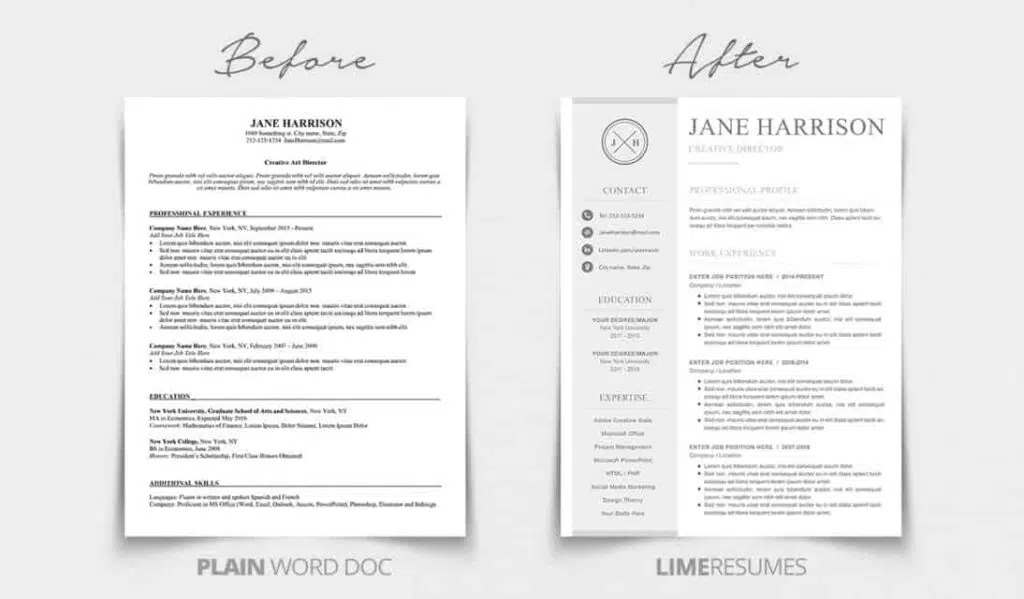
Choose the Right Template
So, you might be wondering how to choose the ideal resume template given all the choices you have.
The first thing to consider is your industry.
You need to choose a template that is appropriate for the industry and professional for the job being applied for.
Next, you need to consider the kind of job being applied to.
What would be the single most important skills to your position; creativity, innovation, analytical skills, or organisation?
If you can display what the recruiter is searching for with your resume, then it will attract them to your profile, encouraging them to look closer and read the resume and content.
The final thing is, after narrowing down which template perfectly complements the industry and your skills, the final decision should be based on your own personal preferences.
Choose a template that you feel shows your personality.
You do need to use a layout which properly displays your experience and skills, but you should also add a little personal flair.
Resume Samples by Style
Combination Resume Examples
If you are a job seeker with lots of experience, then a combination resume can be the right choice for you.
They are similar to functional resumes in that they start with a heavy focus on abilities and skills.
When applying for positions that demand technical expertise, combination resumes provide job seekers with the chance to showcase their skills to hiring managers.
Functional Resume Examples
The functional resume allows job seekers to hide not having a lot of relevant work experience, such as when changing industries .
This resume format is also a good choice when you have unemployment periods in your resume and you don’t know how to cover them up on the resume.
These periods of unemployment must be concealed, otherwise a hiring manager will feel hiring you is a big risk.
Reverse-Chronological Resume Examples
The chronological resume would be perhaps the most common resume format used by job seekers.
It is also known as the reverse chronological format, and is the format that comes to mind for most people thinking about resumes.
The style of the resume is named this because jobs are listed in reverse chronological order.
Explore Resumes
Browse our templates to find one that matches your personality.



